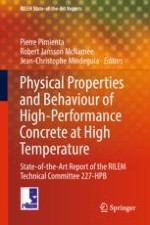This book presents the work done by the RILEM Technical Committee 227-HPB (Physical properties and behaviour of High-Performance Concrete at high temperature). It contains the latest research results on the behaviour of high-performance concretes at high temperature.
The book presents the state of the art of experimental data on High-Performance concretes and it collects and synthesizes useful data about concrete behaviour at high temperatures. The book is divided into independent chapters dealing with degradation reactions in concrete exposed to high temperatures; mass transport properties; thermal properties; and mechanical properties.
The results presented especially target a group of users composed by universities and testing laboratories, building material companies and industries, material scientists and experts, building and infrastructure authorities, designers and civil engineers.
